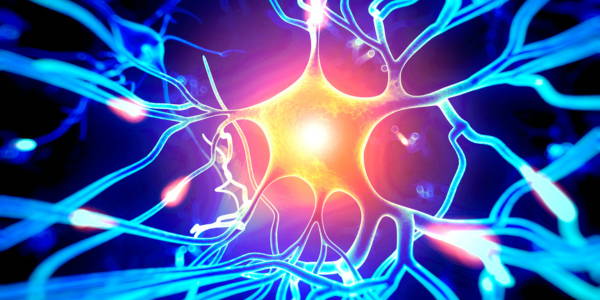
Without NRF2, free radicals would roam unmonitored, wreaking havoc on our DNA and tissues. This cell regulator leads our internal defense systems against oxidative stress and aging.
So what is this magical substance and where can we get it?
Let me tell you all about it.
If you’ve been a part of the biohacking community for even a second, you know that Nrf2 is a hot topic.
From the news to blog posts to YouTube videos, you’re bound to hear the term Nrf2, even if it’s just in passing. Since there’s such a plethora of information out there, you’d think that most would understand how it works.
But au contraire.
Although people talk may about it, not many understand it, unfortunately.
That’s where I come in. To fix this issue, I’m going to give you the ins and outs of Nrf2 and why it’s so important. AND, more importantly, in a way that
anyone can understand it.
Let's dive right in.
What Exactly us NRF2?
To start, Nrf2 is short for Nuclear Factor Erythroid 2-Related Factor, but I’m just going to refer to it as Nrf2 from now on.
Nrf2 is like the head of our internal defense system; it protects us as we age.
Primarily, Nrf2 protects our body from oxidative stress and the damage it causes.
...And what is oxidative stress?
Glad you asked.
Oxidative stress refers to when the number of free radicals is disproportionate to the
antioxidant defenses.
Now let’s break down that sentence.
For those who aren’t aware of free radicals or need a quick recap, a free radical is basically a desperate preteen searching for that perfect someone.
Just like some preteens have to have a boyfriend or girlfriend, free radicals are lonely electrons looking for another electron. Electrons (due to their electromagnetic properties) “like” to be in pairs. And when they don’t got one, they search for one.
Desperately.
This is where things can take a turn for the worst.
Now let’s break down that sentence.
For those who aren’t aware of free radicals or need a quick recap, a free radical is basically a desperate preteen searching for that perfect someone.
Just like some preteens have to have a boyfriend or girlfriend, free radicals are lonely electrons looking for another electron. Electrons (due to their electromagnetic properties) “like” to be in pairs. And when they don’t got one, they search for one.
Desperately.
This is where things can take a turn for the worst.
You see, these rogue molecules can cause havoc by “stealing” electrons from other molecules.
Some free radicals are capable of tearing holes in your DNA or crippling the proteins and lipids that make up your tissues. As a result, these crucial molecules become damaged, weak, dysfunctional, or otherwise incapable of fulfilling their roles. Produced deep within cells as a byproduct of ordinary energy-producing processes, free radicals are thought to be responsible for aging and disease, including even cancer.
Now:
Normally, free radicals are taken care of by antioxidants. They do this by swallowing the electrons from the free radicals, rendering the free radicals inert.
But, going back to that big, bright blue sentence from earlier, when the antioxidant defenses are outnumbered by hoards of free radicals, bad things happen.
To clarify, short-term oxidative stress can actually be helpful in eliminating pathogens.
It’s when the free radicals get out of control that things go downhill.
Starting to get the picture?
Now, going back to Nrf2, we already established that it helps protect us as we age. Based on what we learned, any idea what Nrf2 helps promote?
CORRECT:
ANTIOXIDANTS
So, exactly how does Nrf2 protect us from free radicals?
Nrf2 is... basically like a thermostat. But instead of regulating temperature, it regulates stress levels (aka, oxidative stress).
And like a thermostat, Nrf2 can set parameters to control and maintain a certain stress level in our cells.
Starting to get the picture?
Now, going back to Nrf2, we already established that it helps protect us as we age. Based on what we learned, any idea what Nrf2 helps promote?
CORRECT:
ANTIOXIDANTS
So, exactly how does Nrf2 protect us from free radicals?
Nrf2 is... basically like a thermostat. But instead of regulating temperature, it regulates stress levels (aka, oxidative stress).
And like a thermostat, Nrf2 can set parameters to control and maintain a certain stress level in our cells.
Now:
While small amounts of stress can actually be beneficial, large amounts of stress can be quite harmful. There are many reasons that can cause stress:
- Psychological (trauma, emotional issues, relationships)Environmental (pollution, toxins, UV rays)
- Nutritional (unhealthy foods, poor eating habits, deficiencies)
- Physical (too much exercise, lack of exercise, lack of sleep, illness)
These unending imbalances can cause unstable reactions or conditions in our system, affecting our cells.
And unfortunately, the problem will continue to expand and can imbalance antioxidants and free radicals in the body. Eventually, it can lead to cell destruction and damage.
Aka, oxidative stress.
But Luckily Nrf2 DOES Exist!
We, fortunately,
do have Nrf2 to protect the body from oxidative stress.
When the body is under a lot of stress, it increases the stress levels in the cells to cope. But if the stress level goes beyond health parameters, Nrf2 works the same way as an A/C with a thermostat does.
When the levels get too high, Nrf2 will respond.
It responds by binding with your DNA, signaling the cells to make thousands of molecules to shield the cells. They will later activate a new response to form a new barrier. This “barrier” will protect the cells from future stress.
Furthermore, Nrf2 will remove the toxins that cause cell damage and boost the normal function. Both of these functions will return the stress levels to normal, minimizing the negative effects.
When the levels get too high, Nrf2 will respond.
It responds by binding with your DNA, signaling the cells to make thousands of molecules to shield the cells. They will later activate a new response to form a new barrier. This “barrier” will protect the cells from future stress.
Furthermore, Nrf2 will remove the toxins that cause cell damage and boost the normal function. Both of these functions will return the stress levels to normal, minimizing the negative effects.
Now that we’ve established the importance of Nrf2, where do we get it from?
To increase the activity of Nrf2, you have to eat the right foods.
Solid sources of Nr2f are found in antioxidants, vitamin E and C, phytochemicals, and flavonoids.
Here is a small list of good sources of Nr2f:
- Berries, like blueberries, raspberries, strawberries, and more
- Green tea, white teas
- Dark chocolate (in moderation)
- Grapes (all kinds; green, black/purple, red, all are great)
- Apples (like with grapes, all are good sources of Nrf2)
- Citrus fruits like oranges, lemons, limes, and grapefruit
- Onions
- Soybeans
- Broccoli
- Turmeric
- Red wine (again, in moderation)
- Herbs (especially thyme and parsley)
- Peas and beans
- Hot peppers
- Berries, like blueberries, raspberries, strawberries, and more
- Green tea, white teas
- Dark chocolate (in moderation)
- Grapes (all kinds; green, black/purple, red, all are great)
- Apples (like with grapes, all are good sources of Nrf2)
- Citrus fruits like oranges, lemons, limes, and grapefruit
- Onions
- Soybeans
- Broccoli
- Turmeric
- Red wine (again, in moderation)
- Herbs (especially thyme and parsley)
- Peas and beans
- Hot peppers
There are other ways you can activate Nrf2, like through particular supplements.
Nrf2 Supplements
We, fortunately,
do have Nrf2 to protect the body from oxidative stress.
When the body is under a lot of stress, it increases the stress levels in the cells to cope. But if the stress level goes beyond health parameters, Nrf2 works the same way as an A/C with a thermostat does.
Although oxidative stress alone will activate Nrf2, you can enhance the effect if you use certain compounds. To know if the supplements you take have these compounds, you need to read the label.
Although oxidative stress alone will activate Nrf2, you can enhance the effect if you use certain compounds. To know if the supplements you take have these compounds, you need to read the label.
The compounds you are looking for are:
- Catechol
- Tert-butylhydroquinone
- Hydroquinone
- Isothiocyanate sulforaphane
- Carotenoids
- Curcumin
Although oxidative stress alone will activate Nrf2, you can enhance the effect if you use certain compounds. To know if the supplements you take have these compounds, you need to read the label.
Although oxidative stress alone will activate Nrf2, you can enhance the effect if you use certain compounds. To know if the supplements you take have these compounds, you need to read the label.
The compounds you are looking for are:
- Catechol
- Tert-butylhydroquinone
- Hydroquinone
- Isothiocyanate sulforaphane
- Carotenoids
- Curcumin
The names of the compounds in supplements may seem complicated. Their structure is indeed complex.
But, they do share one thing in common.
They will support Nrf2, and that’s all that matters.
Protandim Nrf2 Synergizer vs. Molecular Hydrogen
If you google for NRF2-supporting supplements, one of the first results to come up will be a product called Protandim Nrf2 Synergizer, which is a supplement that, as the name suggests, helps cells neutralize free radicals. It is thought to do this by enabling cells to produce their own antioxidants.
How does Lifevantage Protandim Nrf2 Synergizer work?
Well, Protandim Nrf2 is basically a mixture of five different herbal supplements:
- Bacopa extract (which has antioxidant properties)
- Milk thistle (which contains silymarin, a very complex flavonoid)
- Green tea extract (contains EGCG or epigallocatechin gallate)
- Turmeric extract (can be useful in suppressing inflammation)
- Ashwagandha
How does Lifevantage Protandim Nrf2 Synergizer work?
Well, Protandim Nrf2 is basically a mixture of five different herbal supplements:
- Bacopa extract (which has antioxidant properties)
- Milk thistle (which contains silymarin, a very complex flavonoid)
- Green tea extract (contains EGCG or epigallocatechin gallate)
- Turmeric extract (can be useful in suppressing inflammation)
- Ashwagandha
Does Protandim NRF2 Synergizer work?
......................................................................................................................................................
Well...
There are plenty of studies that have evidence suggesting their medicinal benefits of the 5
herbal supplements (which is I why included their brief descriptions in this article).
But there’s a catch. Two, actually.
First off, I will talk below about the possible side effects of overdosing/over-activating the Nrf2 pathway, but there are potentially other side effects.
Namely, those that can occur to people who are naturally allergic to the herbal components mentioned previously. The side effects can be:
- Headache
- Stomach pain
- Rash
- Vomiting
- Diarrheav
- Fever
- Wheezing
- Swelling
Namely, those that can occur to people who are naturally allergic to the herbal components mentioned previously. The side effects can be:
- Headache
- Stomach pain
- Rash
- Vomiting
- Diarrheav
- Fever
- Wheezing
- Swelling
If you experience any of these symptoms while taking a supplement, please seek medical attention immediately. (Also, you should talk to your medical professional first before taking ANY new supplement in the first place).
Second of all... Lifevantage Protandim Nrf2 Synergizer recently received a major slap on the wrist by the FDA for falsifying data, misbranding products, and violating regulations.
In other words, there was not enough serious evidence to back up their claims.
Now: I want to leave you with one last supplement that is based on solid research.
One that is not only effective, but also safe.
Enter: Molecular Hydrogen.
Unlike many products and supplements that have side effects or potentially negative properties when overly consumed, molecular hydrogen has neither of
these adverse effects.
In other words, there was not enough serious evidence to back up their claims.
Now: I want to leave you with one last supplement that is based on solid research.
One that is not only effective, but also safe.
Enter: Molecular Hydrogen.
Unlike many products and supplements that have side effects or potentially negative properties when overly consumed, molecular hydrogen has neither of
these adverse effects.
This is why molecular hydrogen is such a hot topic in clinical and pharmaceutical research right now.
Molecular Hydrogen
There have been several well-conducted trials suggesting thatmolecular hydrogen has the same benefits as Nrf2 synergizer claims to have.
In addition, there’s another hidden benefit to molecular hydrogen compared to Nrf2 Protandim. But to understand this benefit, we’ll need to unpack a little chemistry first.
The Dark Side of Nrf2
When it comes to Nrf2, there can be such a thing as “too much of a good thing.”
Even though Nrf2 activation is useful in many cases, having the Nrf2 pathway turned on ALL THE TIME can be harmful to the body.
The dark side of Nrf2 is that mutated cells or cancer cells can use the mutated form of a protein called Keap1 to their advantage. It will form a “shield," or a protective barrier, that would protect them from chemotherapeutic agents. The immune system won’t be able to do anything about it.
So, if the Keap1-Nrf2 pathway is mutated, it can make the tumor grow faster and become more resistant.
Keap1, the protein, contains multiple sensors. If these sensors together with the receptor regions are activated, the body will release Nrf2, and it will pass into the nucleus. When the Nrf2 enters the nucleus, it will bind itself to the region called the Antioxidant Response Element. There are certain genes here. These genes are important because they have antioxidant properties. They are the ones who get rid of oxidative stress. If we lack Keap1, the Nrf2 pathway will remain activated at all times. This can be a serious problem for our body.
Why?
Because mutations can cause cancer. Nrf2 cancer research shows that mutations can increase the risk of cancer.
Summary: if the Keap1 protein is mutated, it can cause cancer. The Nrf2 protein can’t protect the body from this mutated protein. What early studies indicate is that having the Nrf2 pathway activated constantly can actually increase the chance of mortality, hypertension, and albuminuria (a sign of kidney disease). Which is the complete opposite of what we want.
That’s where the hidden benefit of molecular hydrogen comes into play. Molecular hydrogen is a selective Nrf2 activator.
Meaning:
It works only when the body needs it.
So instead of constantly activating the Nrf2 pathway, molecular hydrogen initiates the Nrf2 pathway only in times of
cellular stress.
In other words:
If you experience any of these symptoms while taking a supplement, please seek medical attention immediately. (Also, you should talk to your medical professional first before taking ANY new supplement in the first place).
Enough said!
The bottom line
I hope I helped you understand what is Nrf2 and how to choose safe and effective Nrf2 supplement to improve the quality
of your life.
Did I do well?
Let me know in the comments below!
Resources:
- Oxidative Stress, Inflammation, Cancer, and Aging: Here Is How They're All Linked
- What Are The Health Benefits Of Molecular Hydrogen?
- Molecular Hydrogen and Aging
- The Art of Aging Gracefully: 7 Tips on How To Age Well, According to Science



